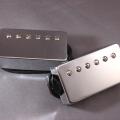The following is a guest post by Norman Harris of Norman Rare Guitars in Tarzana, CA. If you are interested in guest posting, please contact me!
Here’s a simple answer. A great guitar player. Other than a great player, a great instrument, that is in good playing condition that is well constructed with good woods and is well adjusted.
Fine Tone Woods
Quality tone woods are in very short supply these days. There have been embargoes placed on quality woods due to environmental restrictions. Tampering with rain forests, cutting down trees, has left a void and because of such high demand for these tone woods, it is very difficult to find quality aged tone woods. Back in the day, woods used to make fine instruments were aged 50 to 100 years prior to them being used on instruments. These days because of demand, woods are being artificially aged. This is not the same as the natural process of aging. Brazilian rosewood is in very short supply and rare woods dealers are finding their stash diminishing each year.
Spruce, which is the preferred wood for tops and sound boards of guitars, is also in short supply. Adirondack spruce, which is some of the highest quality used for sound boards, is extremely scarce. Substitutes of lesser quality have to be used in order to keep up with the worlds thirst for fine instruments.
Fingerboard materials such as ebony and rosewood are also becoming scarcer. Manufactures are looking for alternative substitutes for all these woods. Good woods make for fine sounding guitars.
Fine Design
A guitar will only sound as good as its design and construction. Bracing patterns, neck shapes, fret sizes, neck angles, bridge design are all part of the design components that make up a fine sounding guitar.
Fine Luthiers and Manufactures
Each Luthier and manufacturer has their own style and design that they prefer. This is what makes each guitar sound different and have its own personality. Acoustic guitar makers each use their own preference in wood, bracing, and cosmetic design. This is what makes each brand slightly different from the next. Electric guitar manufacturers use different pickup designs and each produces a different sound. For instance Gibson Humbucking pickups produce a fatter and warmer sound than Fender’s single coil pickups. Rickenbacker pickups produce a chimey sound associated with groups from the British invasion. Gretsch guitars use DeArmond pickups. This is the choice of many Rockabilly musicians. Other manufacturers use variations to come up with and produce their own sounds.
Pickup Alloys
The wire used to wrap pickups in the old days used specific alloys, many of which are no longer available. Manufacturers have tried to go back and figure out what they used years ago to produce the great sounds these pickups were getting. The amount of winds used, specific metals that were used, and other factors are being studied to come up with the best combinations to enhance tone.
A Guitar being in Fine Adjustment
A guitars set up is of prime importance to its tone. If the action is too high or too low, a guitar will not produce its optimum sound. If a guitar’s frets are not dressed properly, a guitar may sound more like a sitar than a guitar. Materials used at the nut and the bridge also determine a guitar’s tone. Pickup, height adjustment on electric guitars also is very important to maximize a guitars tone.
The bottom line is that nothing makes a guitar sound good but a great player. Great players need fine tools, just like a great carpenter needs fine tools.
When all of the above is in fine order, voila great tone!
Keep rockin and pickin!
Norman Harris is the owner of Norman’s Rare Guitars in Tarzana, California. Norm specializes in high end vintage guitars in addition to basses, amps, and accessories.




Leave a Reply